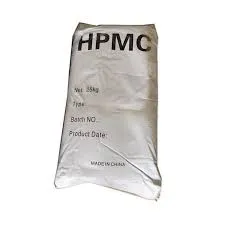
dec . 30, 2024 10:49 Back to list
hpmc uses in detergent
The Role of HPMC in Detergent Formulations
Hydroxypropyl Methylcellulose (HPMC) is a versatile polymer derived from cellulose, widely utilized in various industries, including pharmaceuticals, cosmetics, and notably, household and industrial detergents. Its unique properties make it an excellent additive in detergent formulations, enhancing performance and providing additional benefits. This article explores the uses of HPMC in detergents, highlighting its functionalities and advantages.
Enhancing Viscosity
One of the primary roles of HPMC in detergent formulations is its ability to enhance viscosity. Viscosity is an essential attribute for liquid detergents, as it affects the product's stability and application. HPMC contributes to the desired thickness of the detergent, preventing separation of components and ensuring uniformity. A thicker formulation aids in easy dispensing and precise application, making it more consumer-friendly. Furthermore, enhanced viscosity can also improve the cling of the detergent on surfaces, allowing it to work more effectively without running off quickly.
Stabilizing Formulations
Detergent formulations often consist of various components, including surfactants, builders, and enzymes, which can sometimes destabilize when stored or mixed. HPMC acts as a stabilizer by forming a gel-like structure that encapsulates these ingredients, preventing phase separation and sedimentation. This stabilization is crucial not just for product aesthetics but also for ensuring that consumers receive a consistent and effective cleaning experience every time they use the product.
Working as a Thickening Agent
HPMC serves as a thickening agent, enhancing the overall texture of liquid detergents. This improved texture does not only influence the product's application and aesthetics but also enhances its cleaning abilities. By adjusting the thickness, formulators can ensure that the detergent adheres better to surfaces, increasing contact time with soiled areas and boosting overall cleaning efficacy.
hpmc uses in detergent

Moisture Retention
Another significant benefit of HPMC in detergent formulations is its ability to retain moisture. This property is particularly advantageous for powdered detergents, where maintaining moisture content is crucial to prevent clumping and ensure free-flowing properties. HPMC helps maintain the integrity of the powdered formulation, preventing moisture uptake from the environment that could lead to product degradation.
Environmentally Friendly Option
In recent years, environmental concerns have pushed both consumers and manufacturers towards eco-friendly products. HPMC is derived from natural cellulose and is biodegradable, making it a suitable choice for sustainable detergent formulations. Its inclusion in products can be a selling point for manufacturers aiming to appeal to environmentally conscious consumers. The shift towards green chemistry and sustainable practices in the detergent industry aligns well with the properties of HPMC, offering a gentle yet effective alternative.
Compatibility with Other Ingredients
HPMC exhibits excellent compatibility with various surfactants and additives used in detergent formulations. This compatibility ensures that it can be integrated seamlessly into both liquid and powder detergents without negatively impacting the performance of other components. The flexibility of HPMC allows formulators to create a wide array of detergent products tailored to meet diverse consumer needs.
Conclusion
In summary, Hydroxypropyl Methylcellulose plays a crucial role in modern detergent formulations. From enhancing viscosity and stabilizing mixtures to retaining moisture and promoting environmental sustainability, HPMC stands out as a valuable ingredient. As the demand for high-performing and eco-friendly cleaning products continues to grow, the applications of HPMC in detergents will likely expand, further solidifying its position in the industry. Manufacturers looking to improve their products would do well to consider the benefits that HPMC brings to the table in detergent formulations.
-
Versatile Hpmc Uses in Different Industries
NewsJun.19,2025
-
Redispersible Powder's Role in Enhancing Durability of Construction Products
NewsJun.19,2025
-
Hydroxyethyl Cellulose Applications Driving Green Industrial Processes
NewsJun.19,2025
-
Exploring Different Redispersible Polymer Powder
NewsJun.19,2025
-
Choosing the Right Mortar Bonding Agent
NewsJun.19,2025
-
Applications and Significance of China Hpmc in Modern Industries
NewsJun.19,2025







